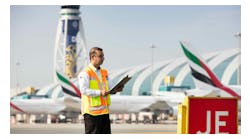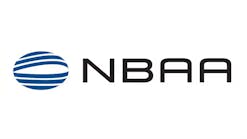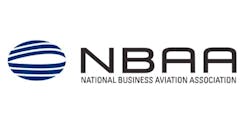Recently an Embraer 145 was scheduled for a flight from Dallas to Milwaukee. The aircraft taxied to the runway area for departure. As is the routine in these days of high fuel costs, the aircraft taxied to the runway using only one engine. The flight crew reported that upon starting the left engine in the runway hold area, the oil quantity in that engine dropped to 2 quarts. They shut the engine down and returned to the ramp area. The flight crew reported that a trail of oil could be seen on the taxiway from the cockpit. Upon arrival at the gate, technicians were dispatched, where they discovered that an oil tank line was disconnected, which had caused the sudden loss of oil from the engine.
A review of the aircraft maintenance log and associated maintenance documents for the aircraft indicated that a PS 1 check had been performed and the left engine oil had been serviced. The engine oil service procedure does not include disconnecting any oil lines.
So What Happened and Why?
An investigation revealed several things of interest, starting with the basic design of the aircraft and ending with technicians using a well-intentioned work around to help keep the aircraft on time and on schedule.
As with most multi-engine aircraft, the engines are mostly interchangeable between the right and left positions. I say "mostly" because there are a few things that need to be relocated or reclocked in order to work on the opposite side of the airplane.
In this case, the engines are installed on the aircraft with a 5-degree roll. This is built in to the basic design of the airframe. This puts the oil filler neck of the right hand engine in a nice upright position to add oil, but it causes problems with servicing the left hand engine. The "skirt" at the bottom of the filler neck on the left engine becomes submerged in oil before the tank is serviced to full.
This prevents the left engine oil tank and lines from venting during oil servicing. When the technician adds oil through the filler neck, it takes time for air to vent out of the tank. Sort of like when you try to feed a fluid through a funnel too quickly, and you have to wait for the funnel to catch up. Add a little oil, let the air "burp" out, then add some more oil. This situation makes it difficult to service the left engine oil to upper limits during quick turn line operations.
As the oil "burps" out, it splashes oil which drops out of the filler neck and onto the engine. This oil, if not carefully cleaned, can run down the inside of the cowling and be mistaken for a leak further down the line. But that is not the source of the oil in this instance.
"Common Knowledge"
In this case, the technician used "common knowledge" to speed the oil servicing. The intentions were good, as by speeding the oil servicing the airplane would dispatch on time - which it did. However an on-time departure doesn't mean much when your destination is changed to the gate you just left from.
It was "common knowledge" that if you loosened the oil scavenge tube fitting it would provide a vent for the tank and would dramatically decrease the time required to service the oil because you didn't have to wait while the oil "burped" down. All it takes is a couple of quick turns with a wrench to loosen the fitting, service the oil quickly, tighten the fitting back, and be on your way. In this case the technician left out one of those steps. He forgot to tighten the oil fitting. As soon as the engine was started, it scavenged almost all the oil out of the tank.
How Did It Happen?
Why did the technician forget? First, because loosening the line was never documented. Second, because he was under the gun to get the aircraft serviced and off the gate on time and on schedule. There was no malicious intent. Quite the opposite, in fact. He was trying to help the customers on the aircraft by keeping the departure on time.
Of course, there are other problems with this procedure. First, a review of the maintenance manual indicates that the oil scavenge tube fitting is required to be torqued upon installation (reference Aircraft Maintenance Manual Subtask 79-00-00-420-028). This was never done, as the "common knowledge" didn't include this little piece of information.
Contributing factors include aircraft design - where in this case ease of maintenance was not considered in the original aircraft design. The addition of a vent valve of some type or a slight redesign of the filler neck could have alleviated this issue altogether.
Document Procedures
Because this is not a maintenance manual/work card procedure it is required to be documented in the aircraft maintenance log as "removed to FOM" (Facilitate Other Maintenance). Had the technician written up the procedure, he would have had a closing action available to trigger him to reinstall and torque the oil scavenge fitting. Technicians may not be complying with documentation because documenting the procedure takes longer than loosening the fitting, adding oil, and reinstalling the fitting. Documenting the procedure would negate the benefit of the time gained by performing the procedure. An age-old dilemma for the technician - it sometimes takes longer to document the work than it does to perform it.
So when and where did this "common knowledge" become "common knowledge"? AMTs interviewed stated that this procedure has been used to speed oil servicing on left hand engines since 1998. Further investigation revealed that this "maintenance tip" came from a manufacturer's technical representative verbally during a training class, and it may have been interperated as an "approved procedure" since it came from a "reliable source."
As the technicians who had attended this particular class moved though the system over the years, this "maintenance tip" turned into "common knowledge." "That's the way I was shown how to do it during OJT" became the standard that was passed on. No one ever bothered to investigate to see if it was an approved procedure.
In this case, the flight crew did what they had to do - return to the gate. The passengers were delayed, and of course the FAA was a little bit less than thrilled with the whole situation. It also caused a cancellation and some ripple flight delays the rest of the day. On the plus side, no one was injured and the aircraft wasn't damaged.
Emphasis on Training and Questioning Common Maintenance Practices
So, how to address the problem? Re-designing the aircraft is not feasible. Training was addressed immediately to cover the situation. The technicians were told that it was not a really good idea to be doing this kind of thing. Of course, those aren't the exact words that were used. They were reminded that they had to document the maintenance they performed - regardless of how "minor" they thought the maintenance was.
In order to address the issue on a system level, the work cards were changed to not require servicing the left engine oil tank to full during a line check. By allowing the technician to leave the left engine oil tank a quart low, the tank venting issue wasn't an issue. To maintain an approriate level of safety, this was offset by requiring the technician to check the oil level more often during line checks, and to service the system to full on overnights.
The technicians had good intentions. They were doing what they had been trained to do by their peers, and they had been doing it for years. Had this incident not occurred, this "common knowledge" maintenance practice would have no doubt continued for many more years until an incident like this did occur.
The thing to learn from this is to question things that are "common knowledge". Don't assume that just because "everybody does it that way" that it is the right way to do it. And of course, always, always, always document the maintenance you perform.




